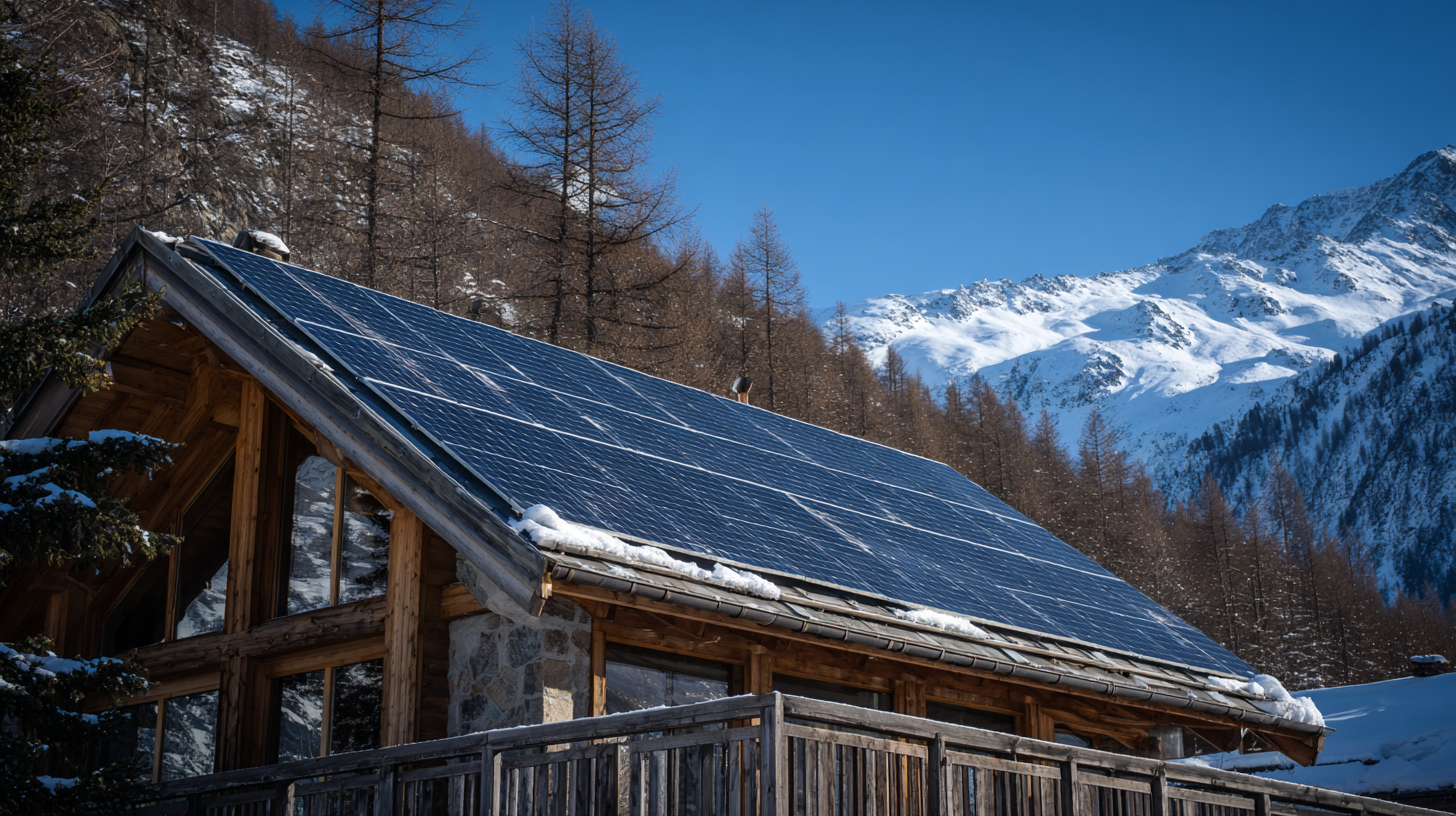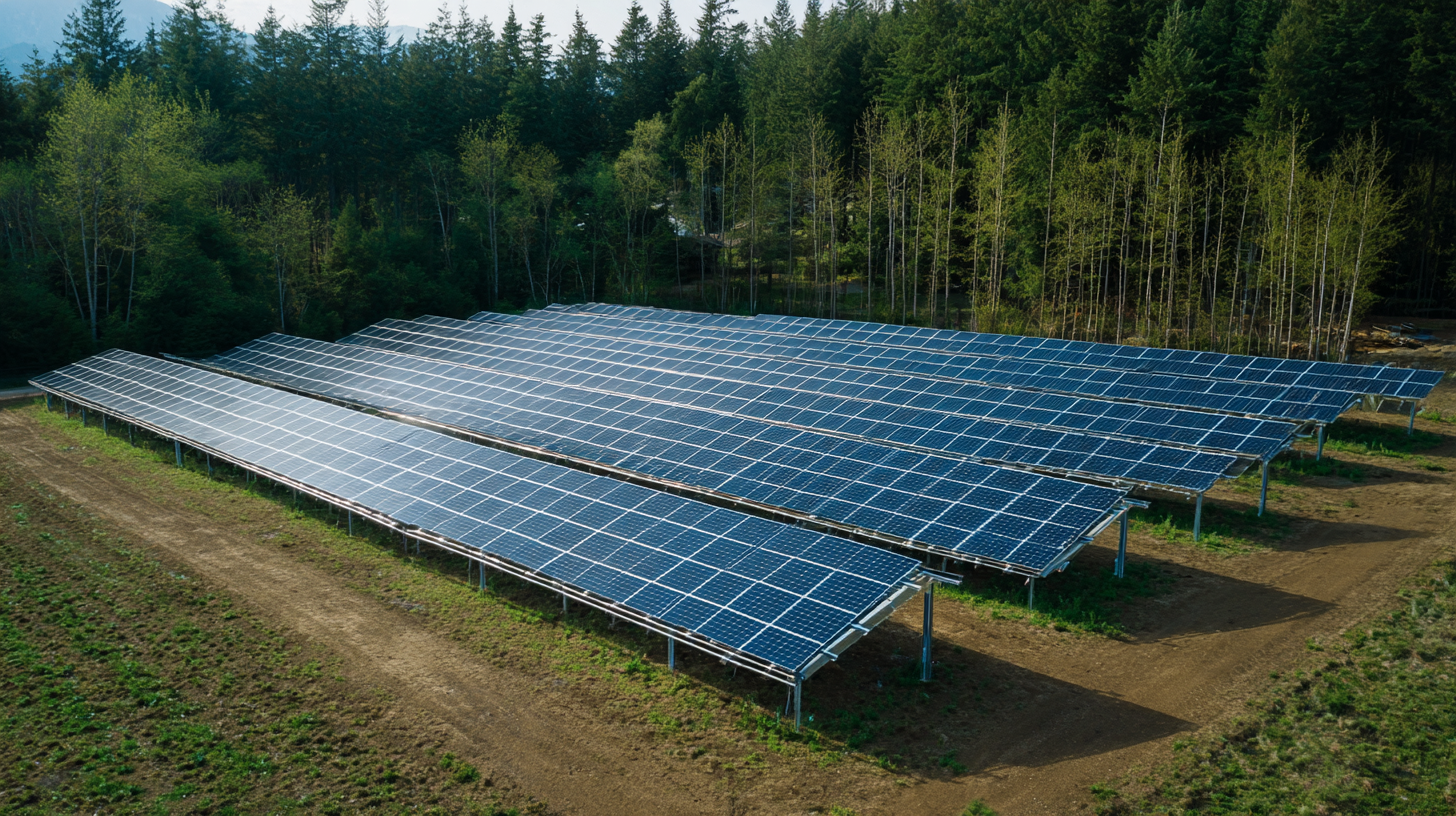Unlocking Home Solar Potential: How 50% Tax Incentives Are Transforming Energy Savings in 2024
As the push for sustainable energy solutions intensifies, the home solar industry is witnessing a transformative shift in 2024, driven by substantial tax incentives that can reach up to 50%. According to the Solar Energy Industries Association (SEIA), residential solar installations grew by over 25% last year, reflecting a growing consumer interest in clean energy sources. With the federal tax credit set to halve after 2023, homeowners are now motivated to invest in home solar systems to capitalize on these remarkable savings.

Furthermore, a recent report by Wood Mackenzie projects that the residential solar market will expand by 30% over the next five years, underscoring the importance of these incentives in reducing initial costs and enhancing long-term energy savings. As homeowners look to minimize energy expenses and contribute to environmental sustainability, the potential for home solar adoption has never been more promising.
How to Understand the 50% Tax Incentives for Home Solar Installations in 2024
In 2024, the introduction of a 50% tax incentive for home solar installations presents a significant opportunity for homeowners looking to reduce their energy expenses. Understanding how to navigate these incentives is crucial for maximizing savings. The tax credit allows homeowners to deduct half of the installation costs from their federal tax liabilities, thereby lowering the overall financial barrier to adopting solar energy systems. This incentive not only enhances affordability but also encourages sustainable energy practices, aligning personal savings with environmental benefits.

To take advantage of the 50% tax credit effectively, homeowners should begin by researching eligible solar technologies and understanding the stipulations attached to the incentive. This includes knowing which panels and installations qualify for the tax deduction and ensuring all necessary paperwork is accurately completed. Additionally, consulting with certified solar providers can provide insights into the total cost of installation and help in accurately predicting the overall return on investment. By being well-informed and proactive, homeowners can fully unlock the potential of solar energy and significantly reduce their long-term energy costs in 2024 and beyond.
How to Evaluate the Long-Term Financial Benefits of Installing Solar Panels
As the 2024 tax incentives for residential solar installations rise to an impressive 50%, homeowners have a unique opportunity to evaluate the long-term financial benefits of converting to solar energy. One essential aspect to consider is the reduction in utility bills. With solar panels generating electricity from sunlight, homeowners can significantly decrease their reliance on grid power, leading to substantial savings each month. Over time, these savings can accumulate, ultimately leading to a return on the initial investment.
Another critical factor is the increase in property value. Studies indicate that homes equipped with solar energy systems often sell at a premium compared to those without. This enhanced property value, combined with tax savings and lowered operational costs, creates a compelling financial narrative for prospective solar panel adopters. Furthermore, the longevity of solar systems—typically lasting over 25 years—means that homeowners can enjoy years of savings and increased equity in their properties, making the decision to go solar not just an environmentally responsible choice, but a financially sound one as well.
Unlocking Home Solar Potential: How 50% Tax Incentives Are Transforming Energy Savings in 2024
| Location | Average System Cost ($) | Tax Incentive (50%) ($) | Net Cost After Incentive ($) | Estimated Annual Savings ($) | Payback Period (Years) |
|---|---|---|---|---|---|
| California | $15,000 | $7,500 | $7,500 | $1,200 | 6.25 |
| Texas | $12,000 | $6,000 | $6,000 | $900 | 6.67 |
| Florida | $14,000 | $7,000 | $7,000 | $1,100 | 6.36 |
| New York | $18,000 | $9,000 | $9,000 | $1,500 | 6.00 |
| Illinois | $16,000 | $8,000 | $8,000 | $1,300 | 6.15 |
How to Navigate Government Programs and Rebates for Solar Energy Adoption
As 2024 unfolds, the landscape for solar energy adoption is becoming more accessible, thanks in part to significant government programs and rebates designed to incentivize homeowners. Navigating these opportunities can be daunting, but understanding the available incentives is crucial for maximizing energy savings. Homeowners can benefit from a 50% tax incentive, which acts as a substantial financial motivator, allowing them to invest in solar panels with reduced upfront costs.
To effectively take advantage of these programs, it is essential to research local and federal initiatives tailored to solar energy adoption. Many states offer additional rebates and incentives that can complement the federal tax credit, resulting in even greater savings. Homeowners should consult with local energy authorities or solar providers to explore the eligibility criteria and application processes for these benefits. By strategically navigating the available government programs, individuals can unlock the full potential of solar energy and realize considerable long-term savings on their energy bills.
Unlocking Home Solar Potential in 2024
This chart illustrates the projected energy savings for homeowners who adopt solar energy systems in 2024, highlighting the impact of a 50% tax incentive. The data shows the average annual savings based on different system sizes.
How to Choose the Right Solar System to Maximize Energy Savings
When considering the installation of a solar system in 2024, it's essential to evaluate various factors that can significantly affect energy savings. First, assess your home’s energy needs. Understanding your average energy consumption will help you determine the size and capacity of the solar system that best fits your requirements. A system that generates more energy than you need can lead to excessive costs and maintenance, while an undersized system may not yield adequate savings.

Next, consider the type of solar panels available. There are two primary types: monocrystalline and polycrystalline. Monocrystalline panels are more efficient and take up less space, making them ideal for homes with limited roof area. However, they often come at a higher cost. Polycrystalline panels, while less efficient, offer a more budget-friendly option and can be effective in larger installations.
Additionally, don't overlook the importance of inverter quality and battery storage solutions. High-quality inverters enhance energy conversion efficiency and ensure reliability, while battery systems can provide backup during outages and store excess energy for later use. By carefully selecting the right components, homeowners can maximize their energy savings and fully benefit from 50% tax incentives in 2024.
How to Calculate Your Return on Investment for Home Solar Energy Solutions
As homeowners increasingly turn to solar energy solutions, understanding how to calculate your return on investment (ROI) becomes essential. With the attractive 50% tax incentives introduced in 2024, the potential for energy savings is significant. To start, consider your total installation cost, including panels, inverters, and labor. Subtract any tax incentives to determine your net investment. Then, estimate your annual energy savings by analyzing your past utility bills to see how much you can potentially save each year by using solar energy.
Tips: When calculating ROI, don't forget to factor in maintenance costs and the lifespan of your solar system. Most solar panels come with a warranty of 25 years, so spreading your costs over this period can provide a clearer picture of your investment. Additionally, keep an eye on your local utility rates; as these increase, your savings from solar will grow even further, making the investment more appealing.
Another key element to consider is the increase in your property value. Studies have shown that homes equipped with solar energy systems often sell for more than those without. This added value should be included in your overall ROI calculation. By taking these factors into account, you can make an informed decision about investing in home solar energy solutions and enjoy the benefits of savings and sustainability.
Related Posts
-

Unlocking China's Solar Potential at the 138th Canton Fair 2025 Insights and Industry Data
-

7 Best Solar Systems Innovations Transforming Global Energy Markets
-

Unlocking the Specifications of the Best Solar Solutions for Global Buyers
-

Home Solar Panels: Common Challenges and Solutions for a Sustainable Future
-

What is a Solar Absorber and How Does It Enhance Energy Efficiency
-

Unlocking Efficiency: The Economic Advantages of Hot Water Solar Systems for Sustainable Living
